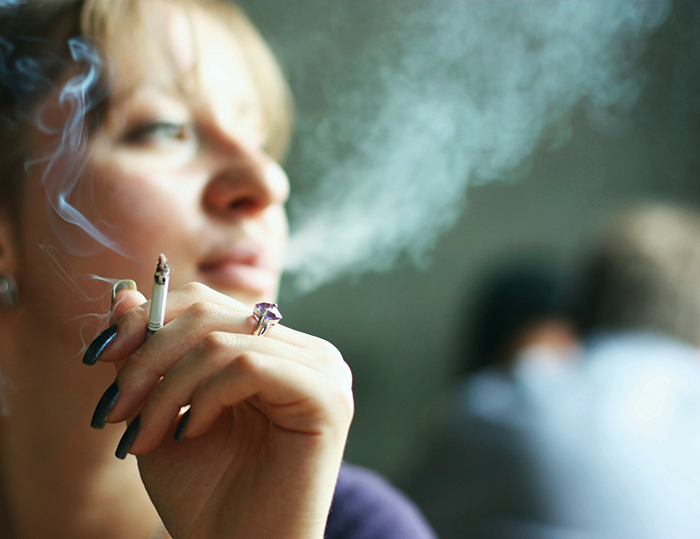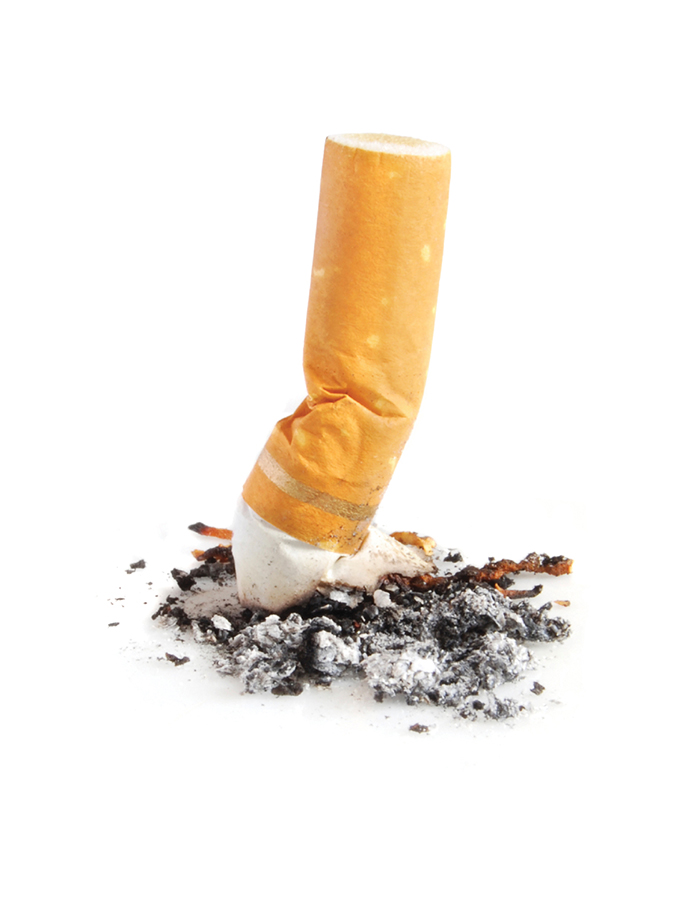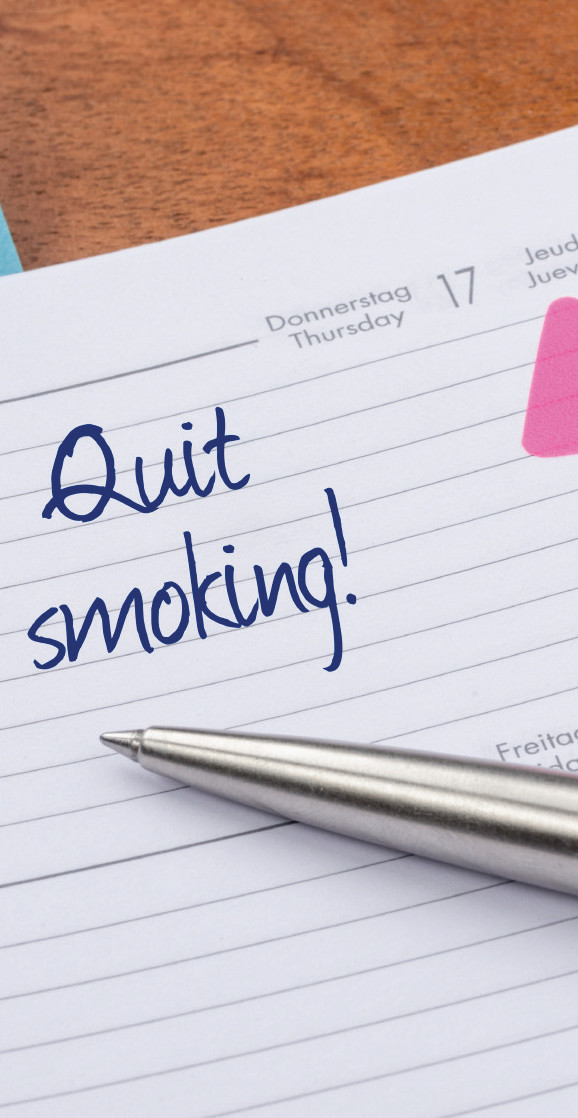Smuggling smoke
In In-depth
Follow this topic
Bookmark
Record learning outcomes
On 31 May, World No Tobacco Day is aiming to raise awareness of the illicit tobacco trade and reduce consumption

Every year on 31 May, the World Health Organization (WHO) and partners mark World No Tobacco Day to highlight the health risks associated with tobacco use and advocate effective policies to reduce consumption. Currently, global tobacco consumption kills nearly six million people each year, of whom more than 600,000 are non-smokers dying from second-hand smoke exposure. This year's theme €“ stop illicit trade of tobacco products €“ aims to address the global problem of illegal tobacco trading and minimise its impact on health, governance and the economy.
Scale of the problem
All tobacco products sold in the UK are required to display a 'UK duty paid' marking to help distinguish legitimate products from smuggled goods. Despite this, up to one in every 10 cigarettes consumed globally is obtained via the illicit tobacco market, which costs the EU and their member states over ‚¬10 billion annually in lost tax and customs revenue. €The illicit tobacco trade reached its peak in the UK during the late 1990s, when it made up an estimated 20 per cent of the total cigarette market,€ says Amanda Sandford, information manager at public health charity Action on Smoking and Health (ASH).
€Tobacco companies facilitated black market cigarettes.€ In 2000, Customs & Excise (now HM Revenue & Customs) estimated that 21 per cent of cigarettes and 63 per cent of hand rolled tobacco in the UK market was illicit, costing the Government more than £3 billion each year in lost revenue. These figures have, however, decreased dramatically over the last decade. HM Revenue & Customs estimates that 10 per cent of cigarettes and 39 per cent of hand rolled tobacco consumed in the UK were illicit in 2013-2014. The accessibility of illicit tobacco products can encourage addiction in younger people.
€Illicitly imported tobacco is cheaper, so younger people have easier access as it's within their price range,€ explains Amanda. €Illicit trading allows young people access to cigarettes that are half or less than half of the genuine market price.€ Such products also mislead tobacco users by not displaying visual health warnings, which undermines public health campaigns.
Other susceptible individuals include low-income groups. €Evidence suggests that people in low-income groups are just as likely to want to quit but find it harder due to their circumstances,€ explains Amanda. €The illicit trade undermines healthcare policies and awareness campaigns.
Cheaper tobacco reduces the motivation to quit.€ Illicit tobacco trade covers a wide range of activities, such as:
- Smuggling €“ unlawfully moving tobacco products from one authority to another, without paying the right tax
- Counterfeiting €“ illegally manufacturing an apparently lawful and well-known product without the owners' consent
- Bootlegging €“ legally buying tobacco products in one country and transporting them to a country with a higher tax rate
- Illegal manufacturing €“ manufacturing without declaration to the relevant authorities.
Tobacco taxes are cited as the most cost-effective way to reduce tobacco use, particularly among young and low-income groups. A tax increase that raises tobacco prices by 10 per cent reduces tobacco consumption by around four per cent in high-income countries. According to ASH, the Treasury earned an estimated £12 billion in revenue from tobacco duties for the financial year 2012 to 2013.
However, smuggling results in a net loss to the Treasury of around £1.6 billion a year. €And it's not just the Treasury that is affected,€ says Amanda. €Tobacco smuggling is associated with large scale organised crime, which in turn may be linked to further crimes, such as human trafficking and other illicit activities.€
What's being done?
According to ASH, keeping tobacco prices high through taxation is one of the most effective ways of encouraging smokers to quit. However, this policy risks being undermined if there are insufficient controls in place to curb the illicit trade. €In 2000, the Government introduced a new strategy to help tackle illicit trading head on,€ explains Amanda.
 €They employed more customs officers and intelligence staff, deployed scanners at ports to check incoming tobacco, imposed tougher sanctions and ran a public awareness campaign. The policy has been in place for around 12 to 13 years and since then the illicit market has halved, so it has had some success.€ The effectiveness of these measures was reviewed using reports from the national audit office, the House of Commons public accounts committee and the House of Commons home affairs select committee in 2013 and 2014.
€They employed more customs officers and intelligence staff, deployed scanners at ports to check incoming tobacco, imposed tougher sanctions and ran a public awareness campaign. The policy has been in place for around 12 to 13 years and since then the illicit market has halved, so it has had some success.€ The effectiveness of these measures was reviewed using reports from the national audit office, the House of Commons public accounts committee and the House of Commons home affairs select committee in 2013 and 2014.
Although progress was noted, they urged that more should be done to definitively tackle the problem. Action against illicit trade was further strengthened through legally binding agreements between the EU and all four major multinational tobacco companies €“ Philip Morris International, Japan Tobacco International, BAT and Imperial Tobacco. These require companies to approve contractors and provide customs with online information so that they can directly trace any smuggled cigarettes to the purchaser.
In 2012, a protocol to eliminate illicit trade in tobacco products was internationally agreed at the WHO's Framework Convention on Tobacco Control's fifth conference. Under the protocol, parties involved must undertake various methods to secure the supply chain of tobacco, including improved information sharing and legal assistance. A cost-benefit analysis revealed the protocol could reduce UK smuggling by up to 80 per cent, saving 760 lives a year.
In addition, the revised EU Tobacco Products Directive comes into force in May 2016. This requires EU member states to introduce an EU-wide tracking and tracing system for tobacco products based on a 'unique identifier' on every packet.
The impact of plain packaging
The tobacco industry frequently argues that introducing standardised (plain) packaging for tobacco products increases illicit trade. However, key security features on standardised packaging help to identify illicit products. These key features include:
- A covert mark
- Other security markers (varies between manufacturers)
- Number codes.
€Standard packaging is important as it's the final means of ending advertising,€ says Amanda. €There's no evidence that standard packaging will make it easier to smuggle.€ Research suggests that hard-hitting anti-tobacco advertisements and graphic pack warnings reduce the number of children who begin smoking and encourage smokers to quit.
Pictorial package warnings have been implemented in some countries, with studies consistently revealing how they significantly increase people's awareness of the dangers of tobacco, as well as persuading smokers not to smoke inside their homes or near children. €Graphic health warnings tell the truth about smoking, such as how it causes lung disease and gangrene of the foot,€ says Amanda. €It stops the tobacco companies promoting a particular image or lifestyle.€
Despite this, just 30 countries, representing 14 per cent of the world's population, meet the best practice for pictorial warnings, which includes using the local language and covering an average of at least half of the front and back packaging. The UK introduced picture warnings on cigarette packs in October 2008. Since October 2010, picture warnings have been required on all other smoked tobacco products.
The new EU Tobacco Products Directive will require warnings to cover 65 per cent of both sides of the packaging. €Images have more of an impact than just text,€ explains Amanda. €The bigger and bolder the warning, the better.
How can pharmacy help?
 €When customers come in seeking any health advice, it's an opportunity to discuss their lifestyle,€ says Amanda. €Pharmacies have a clear role in advising on medication that may assist those looking to quit or referring them on for support. Don't be afraid to ask that question €“ 'do you smoke?'€
€When customers come in seeking any health advice, it's an opportunity to discuss their lifestyle,€ says Amanda. €Pharmacies have a clear role in advising on medication that may assist those looking to quit or referring them on for support. Don't be afraid to ask that question €“ 'do you smoke?'€
Smoking cessation is one of the main health services provided by community pharmacy, with more than 400 people quitting every month with the help of NHS counselling. €Community pharmacists and their teams can help patients give up smoking all year round, but if your patient has been thinking about giving up smoking for a while, World No Tobacco Day gives you a great opportunity to encourage them to set a quit date,€ says a National Pharmacy Association (NPA) spokesperson. Pharmacies often establish strong relationships within their community, particularly with families who have visited the pharmacy for years.
As such, they're well placed to educate young people on the risks of smoking and, in doing so, discourage them from accessing inexpensive, illicit tobacco. €Pharmacists can offer advice about tobacco use, give a talk or presentation, or get involved in health checks, which may encourage individuals to consider quitting,€ says the NPA. Poster displays and props can also initiate discussion.
€It may be helpful to consider the effects of smoking when providing advice to a smoker about a nuisance cough,€ adds the NPA. €Using a visual prop such as a tar jar can support explanation of why such symptoms are occurring in a non-judgemental way.€
Pharmacies have a clear role in advising on medication that may assist those looking to quit or referring them on for support. Don't be afraid to ask that question €“ 'do you smoke?'
